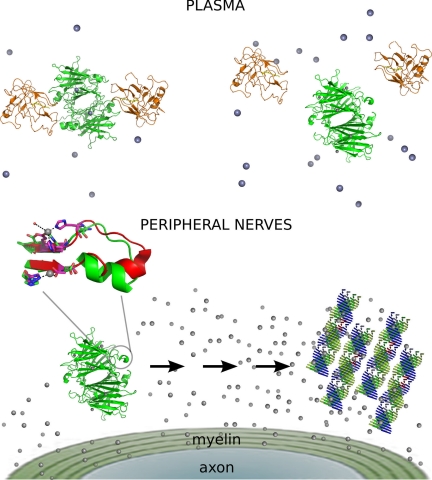FIGURE 7.
Scheme of the main findings of the present study. In the plasma (upper panel), ZBS 1 of TTR is occupied with Zn2+ (gray spheres), and it does not elicit any major structural alteration in TTR conformation, allowing its tight interaction with holo-RBP (orange structure). In the presence of an increased concentration of Zn2+, ZBS 2 and 3 are occupied by Zn2+; this triggers a conformational change mainly in the neighborhood of the α-helix (blown-up image). In the plasma, this change in conformation displaces holo-RBP (upper panel), while in the peripheral nerves it leads to TTR aggregation and fibril formation (lower panel). The intermediate species, which are present in the pathway from Zn2+-bound tetramers into amyloid fibrils, are unknown.

